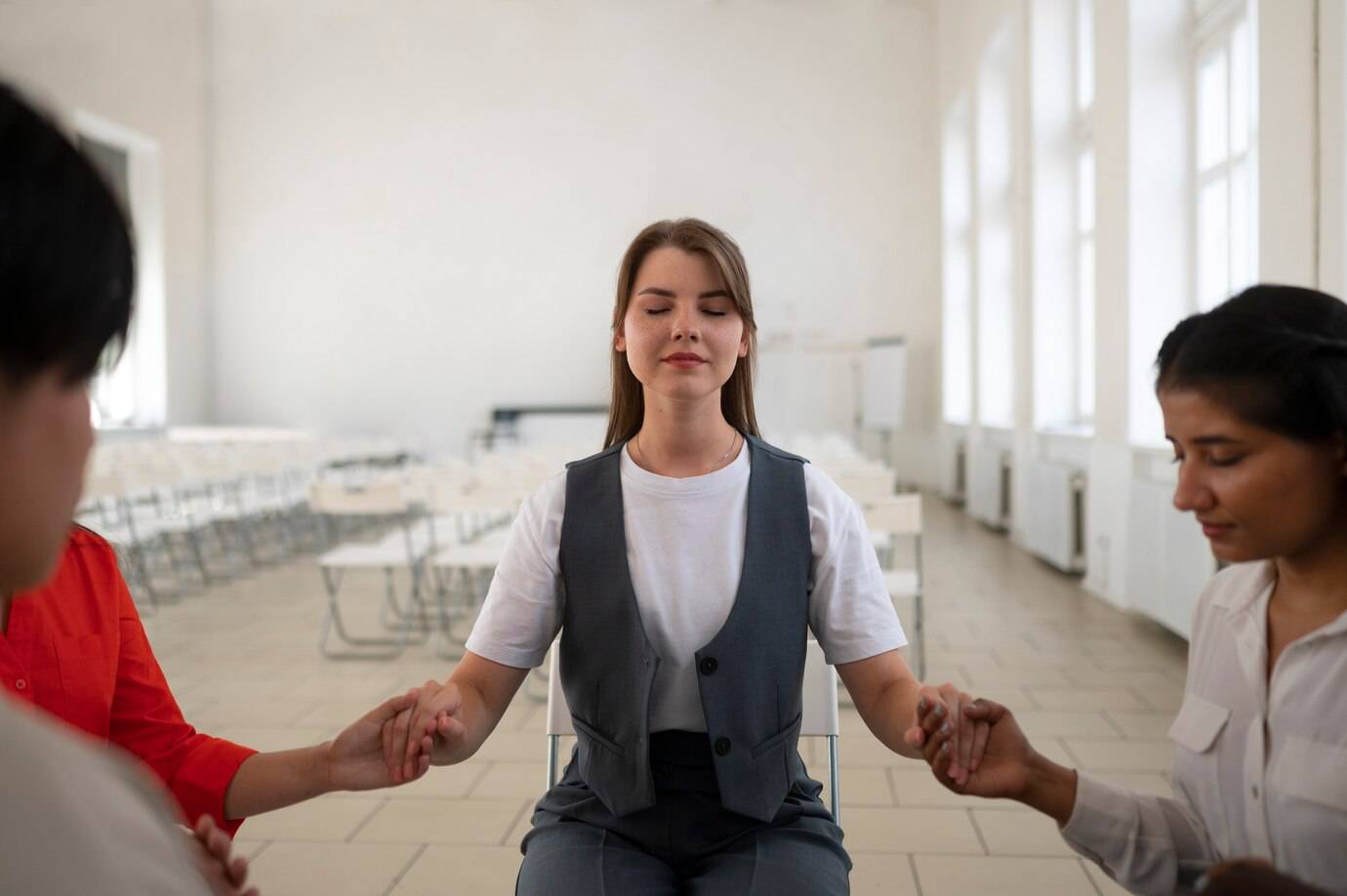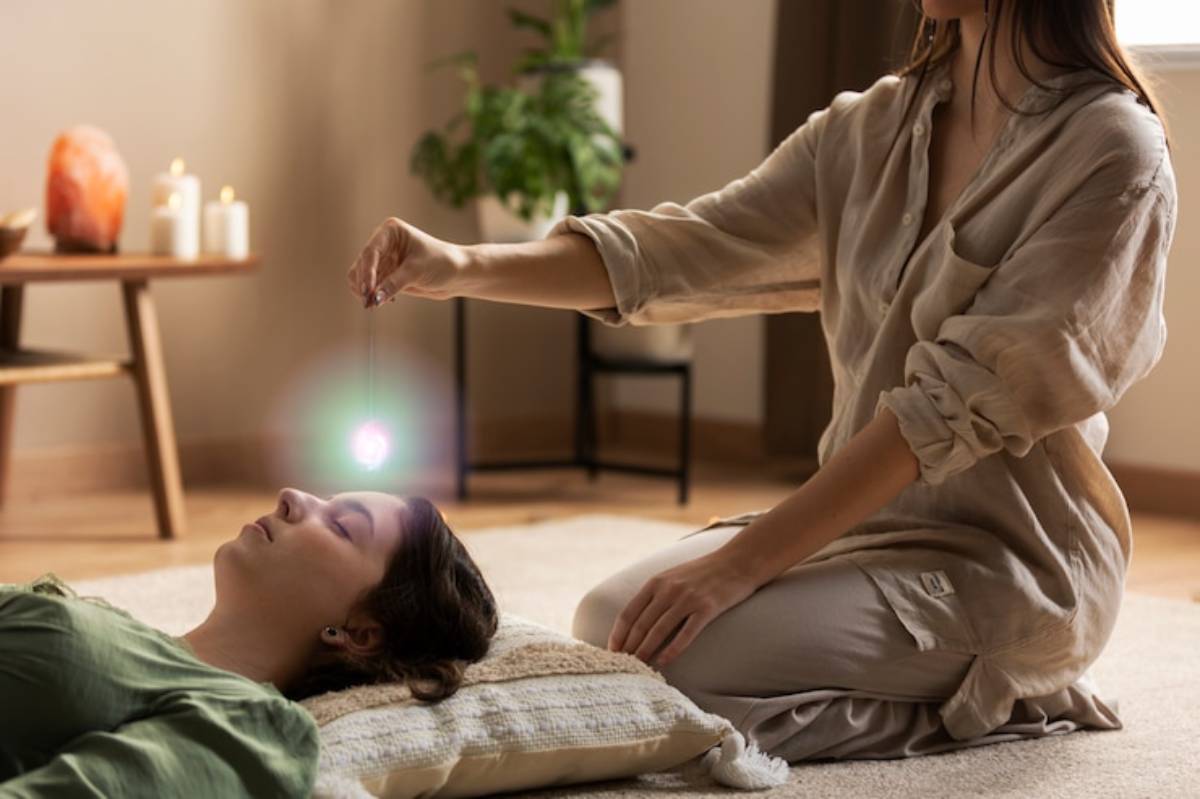
Exploring Reiki: Energy Healing for Mind and Body
Have you ever felt mentally drained, emotionally stuck, or physically tense without a clear reason? It might not be just stress or fatigue — your body’s energy system could be out of balance. In a busy world, Reiki provides a gentle way to heal and reconnect with your inner strength.
Reiki healing is an ancient Japanese practice. It uses the body’s natural energy flow. This promotes relaxation, clarity, and emotional release. If you’re new to holistic energy healing or want to know how energy therapy fits into modern wellness, this article will explain the basics of Reiki. You’ll learn about its key principles, practical uses, and transformative power.
You’ll discover how Reiki works. You’ll explore the science and spirituality behind it. You’ll also see how it can support your physical and emotional well-being. Ready to discover how this hands-on healing method can nurture your mind, body, and spirit? Let’s dive in.
What Is Reiki Healing?
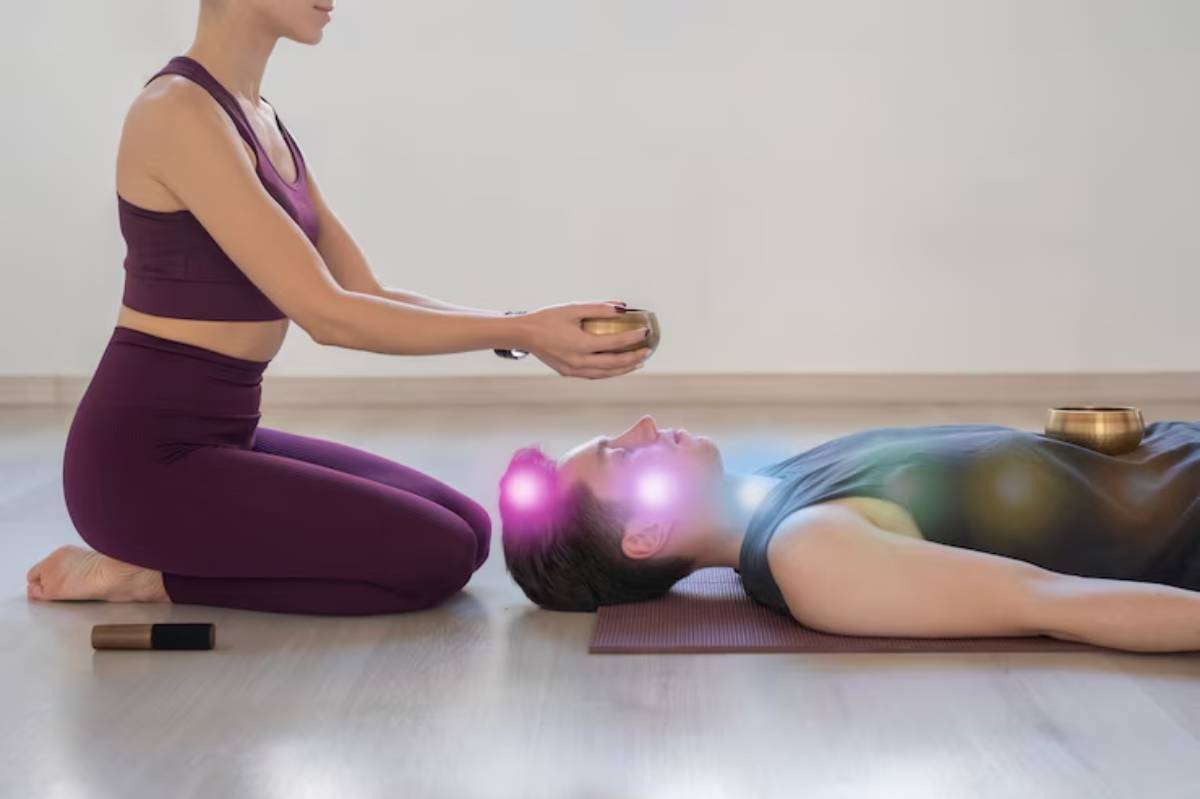
Origins of Reiki
Reiki (pronounced “ray-key”) is derived from two Japanese words:
- “Rei” meaning universal
- “Ki” meaning life force energy
Together, Reiki means “universal life energy.” Mikao Usui, a Japanese spiritual teacher, developed this healing technique in the early 20th century. He believed that energy should flow freely in the body for harmony. When it gets blocked, we may feel stress or illness.
How Reiki Healing Works
Reiki practitioners act as channels for universal energy. They gently place their hands on or just above the client’s body. This transfers healing energy that:
- Balances energy centres (chakras)
- Promotes relaxation and stress relief
- Supports the body’s natural healing processes
No massage or manipulation happens here. It’s all about calm, focused presence and energy transfer.
The Science and Spirituality of Reiki
Energy Therapy Meets Modern Research
Reiki has strong spiritual roots that are well respected. However, interest in energy therapy is growing in the scientific community. Studies have shown Reiki may help with:
- Reducing anxiety and depression
- Lowering heart rate and blood pressure
- Improving sleep quality
A 2017 study in the Journal of Evidence-Based Complementary & Alternative Medicine found that Reiki helps lower stress and improve comfort for surgery patients.
The Biofield and Energy Medicine
Reiki is part of a broader category of energy medicine. The National Institutes of Health calls this the “biofield.” It is an energy field that surrounds and penetrates the human body. Reiki practitioners aim to restore harmony in this field to support whole-body wellness.
Think of your body like a musical instrument. When in tune, everything feels right. Reiki helps adjust your energy field. This way, you feel aligned, grounded, and balanced.
What Happens During a Reiki Session?
Setting the Scene
A typical Reiki session lasts between 45 to 90 minutes. You remain fully clothed and lie down on a massage table or sit in a chair. The setting is serene, often with soft lighting, calming music, and aromatherapy.
The Practitioner’s Role
Your Reiki practitioner will start by scanning your energy field. Then, they will place their hands on or above areas like your head, shoulders, chest, abdomen, or feet. You might feel:
- Warmth or tingling
- A gentle pulse
- Deep relaxation or drowsiness
Everyone’s experience is different. Still, many feel peaceful, lighter, and emotionally clearer afterwards.
Benefits of Reiki Healing
Emotional and Mental Benefits
- Reduces stress and anxiety
- Enhances emotional clarity
- Supports grief and trauma processing
Physical Health Support
- Boosts immune function
- Reduces chronic pain
- Supports recovery from illness or surgery
Spiritual Growth
Reiki isn’t a religion. Many people feel it boosts their inner peace, intuition, and connection to something bigger.
“Reiki helped me process my grief in a way nothing else could. I felt like someone finally turned the volume down on my pain.” — Sarah, a client recovering from loss
Is Reiki Safe? What Are the Risks?
Reiki is non-invasive and safe for all ages, including children, the elderly, and even pets. It can work with regular treatments and has no known side effects. However, it should not be used as a substitute for medical care.
Always talk to your healthcare provider. This is important if you have serious conditions like cancer or heart disease. Reiki works best as a complementary therapy, not an alternative one.
Can You Learn Reiki for Yourself?
Yes! Many people learn Reiki to use on themselves and their loved ones. Reiki training involves attunements (energetic initiations) from a qualified teacher. There are generally three levels:
- Level 1 (Shoden): Learn self-healing and basic hand positions
- Level 2 (Okuden): Learn distance healing and energy symbols
- Level 3 (Shinpiden/Master): Learn to teach and attune others
Reiki and Chakra Balancing
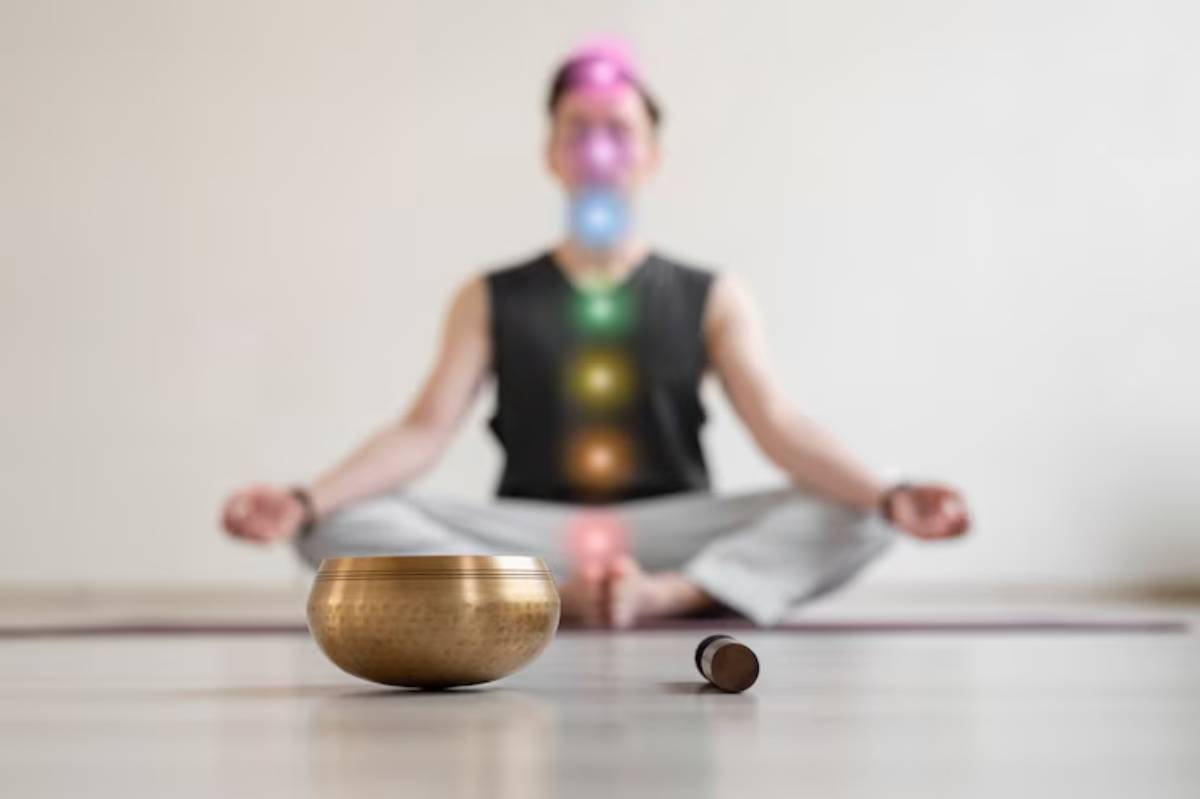
Reiki naturally supports chakra balancing, as both work with the body’s energy system. The seven major chakras govern physical and emotional well-being. When Reiki energy flows through these centres, it can:
- Clear emotional blocks
- Improve physical vitality
- Enhance emotional resilience
Curious about chakra work? Visit Chakra Balancing Techniques for Emotional Well-being .
Real-Life Experiences with Reiki
Case Study: From Burnout to Balance
Amy, a marketing executive, experienced chronic stress and fatigue. After three Reiki sessions, she reported:
- Improved sleep
- Reduced tension headaches
- A deeper sense of calm
“I finally felt like I could breathe again,” she shared.
A Parent’s Perspective
Tom, a father of a child with ADHD, uses Reiki as part of their nighttime routine. His son has become more relaxed and less prone to emotional outbursts.
Here are a few stories that show how Reiki fits into real lives and brings real results.
Integrating Reiki into Your Daily Life
Reiki doesn’t have to be limited to formal sessions. Here’s how you can infuse it into your routine:
- Morning self-Reiki practice: Set a calm tone for the day
- Evening body scan and energy check-in
- Using Reiki symbols (if trained) for emotional balance
Many people use Reiki with journaling, meditation, or yoga. This helps strengthen their mind-body connection.
Reiki for Everyday Stress: A Pocket Calm Practice
Modern life often brings small moments of stress — a tense meeting, a crowded commute, or a restless night. Reiki doesn’t need to be saved for full sessions. It can also be a quick, calming tool when life gets overwhelming.
Try this simple pocket Reiki practice:
- Pause and breathe. Close your eyes and take three deep, slow breaths.
- Place your hands over your heart. Rest them lightly on your chest or hover them slightly above.
- Focus your mind. Think of warmth, peace, or a word like “calm” or “balance.”
- Stay here for 2–5 minutes. You may notice your breathing slows or your shoulders relax.
Even a few quiet moments of Reiki-inspired mindfulness can shift your energy and reduce stress. It’s like giving your nervous system a gentle reset, right when you need it.
Conclusion: Embrace the Healing Flow
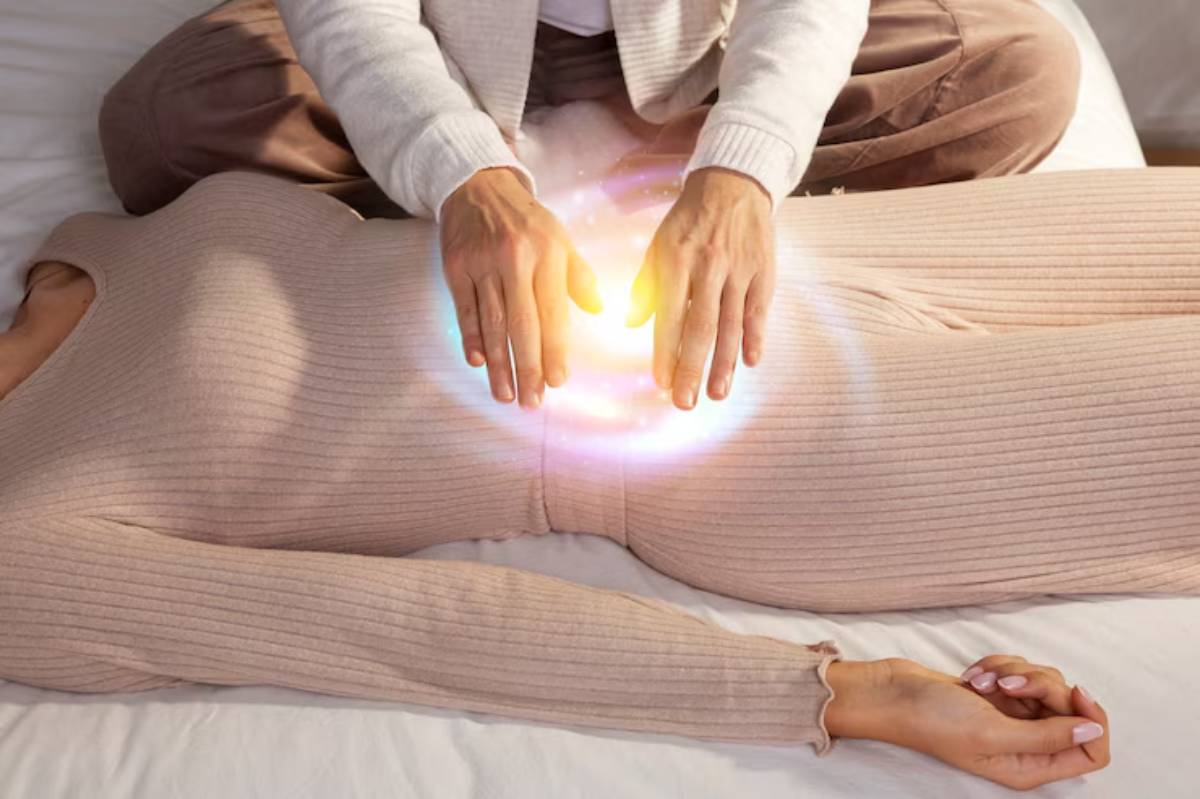
In our busy world full of noise and stress, Reiki invites you to reconnect with your inner self. Reiki offers a safe space for healing and self-awareness. Whether you’re dealing with emotional struggles, managing a health issue, or looking for peace, Reiki can help.
This gentle, hands-on practice isn’t a magic cure. However, it can be a valuable, nurturing part of your wellness toolkit. Why not explore it for yourself?
Ready to begin? Check out our practical guide on How to Practice Reiki Self-Healing at Home or book a session with a qualified practitioner. If you’ve already tried Reiki, share your experience in the comments — we’d love to hear how it helped you.

